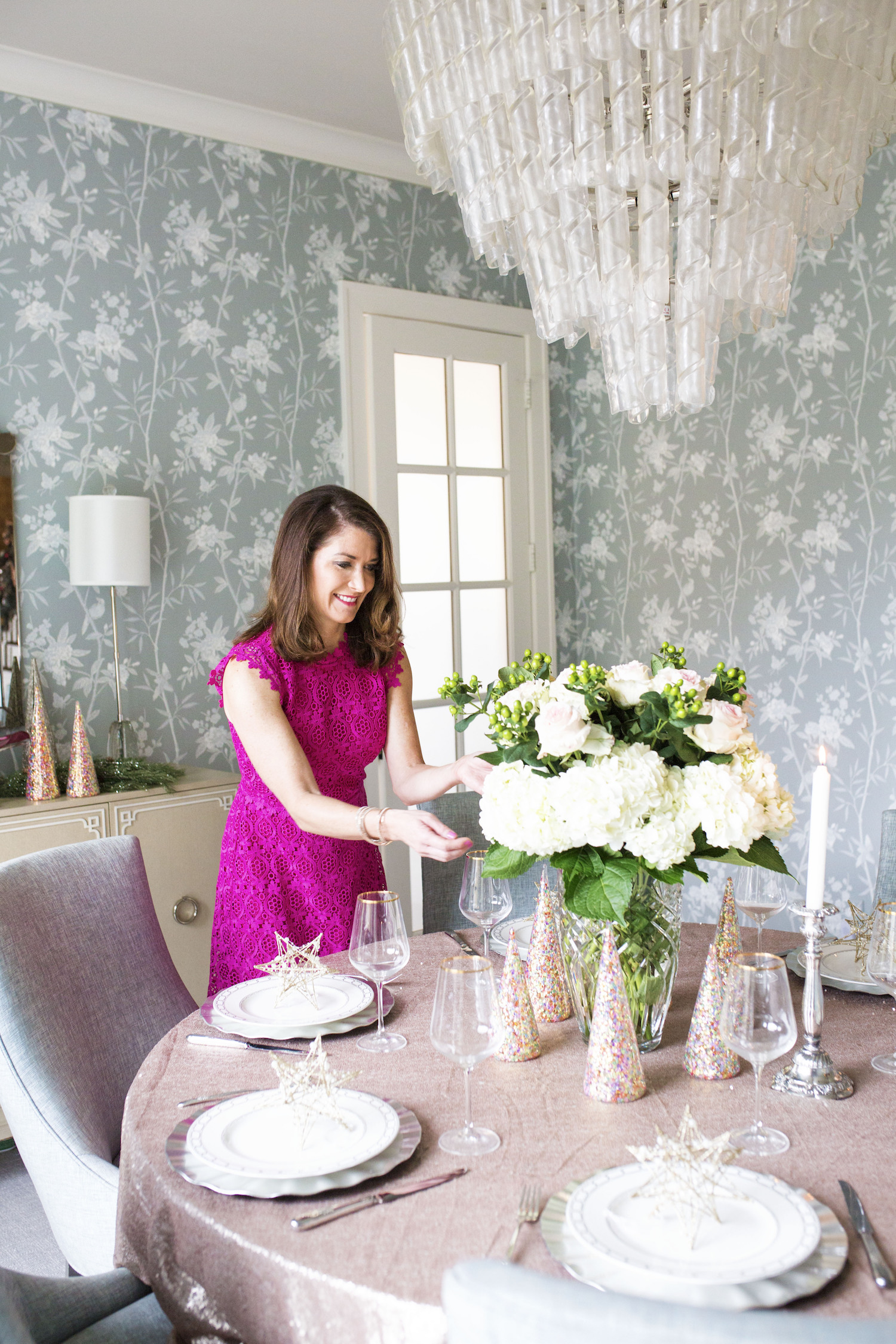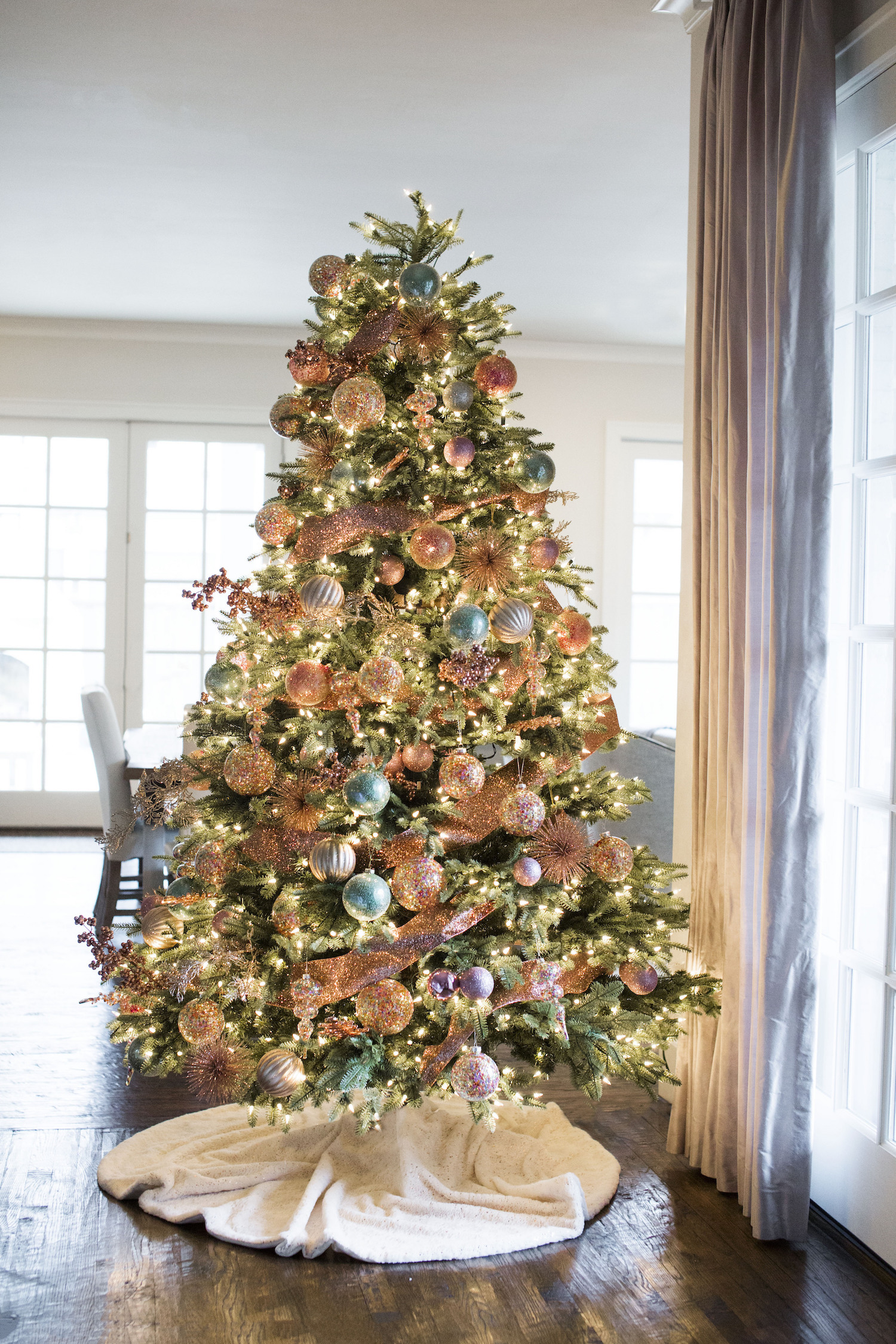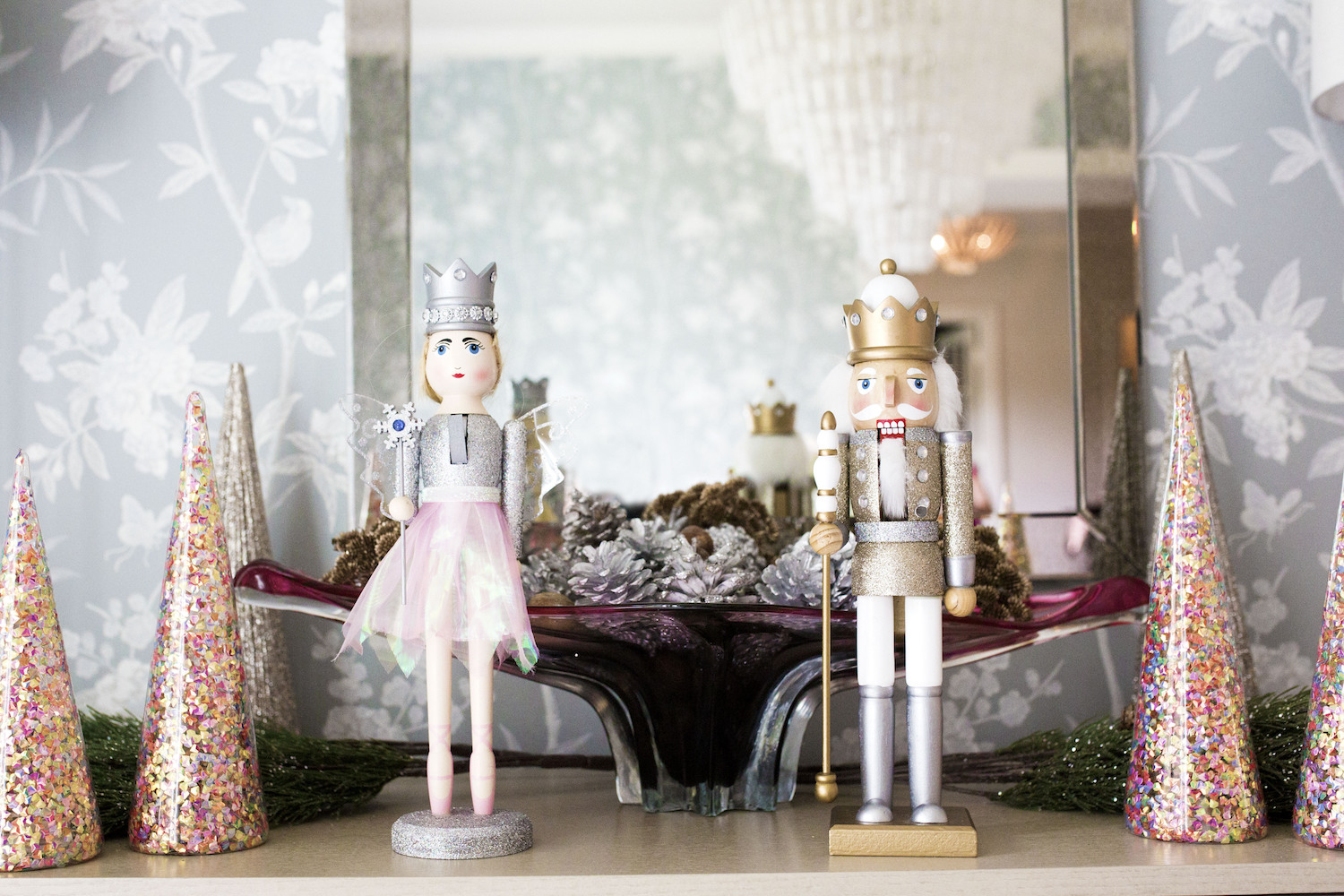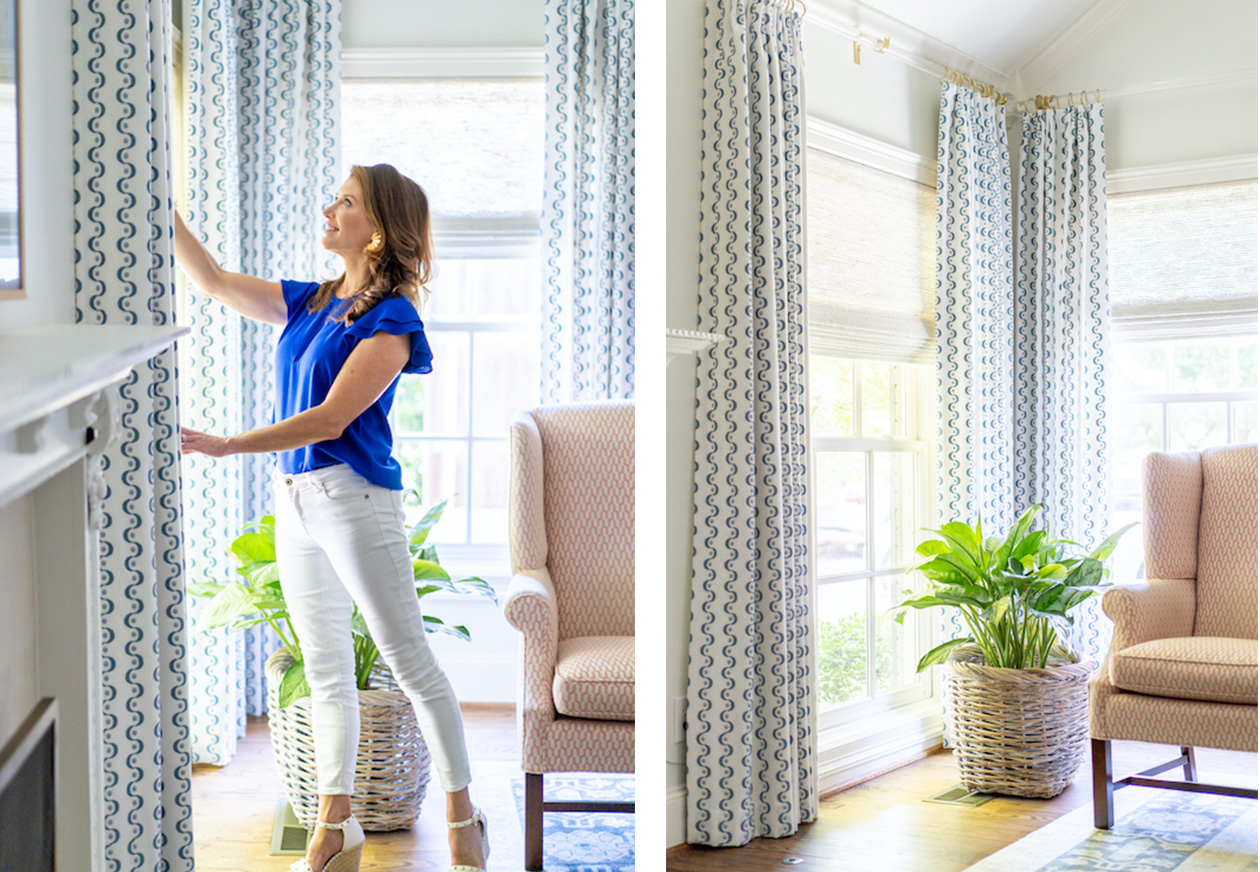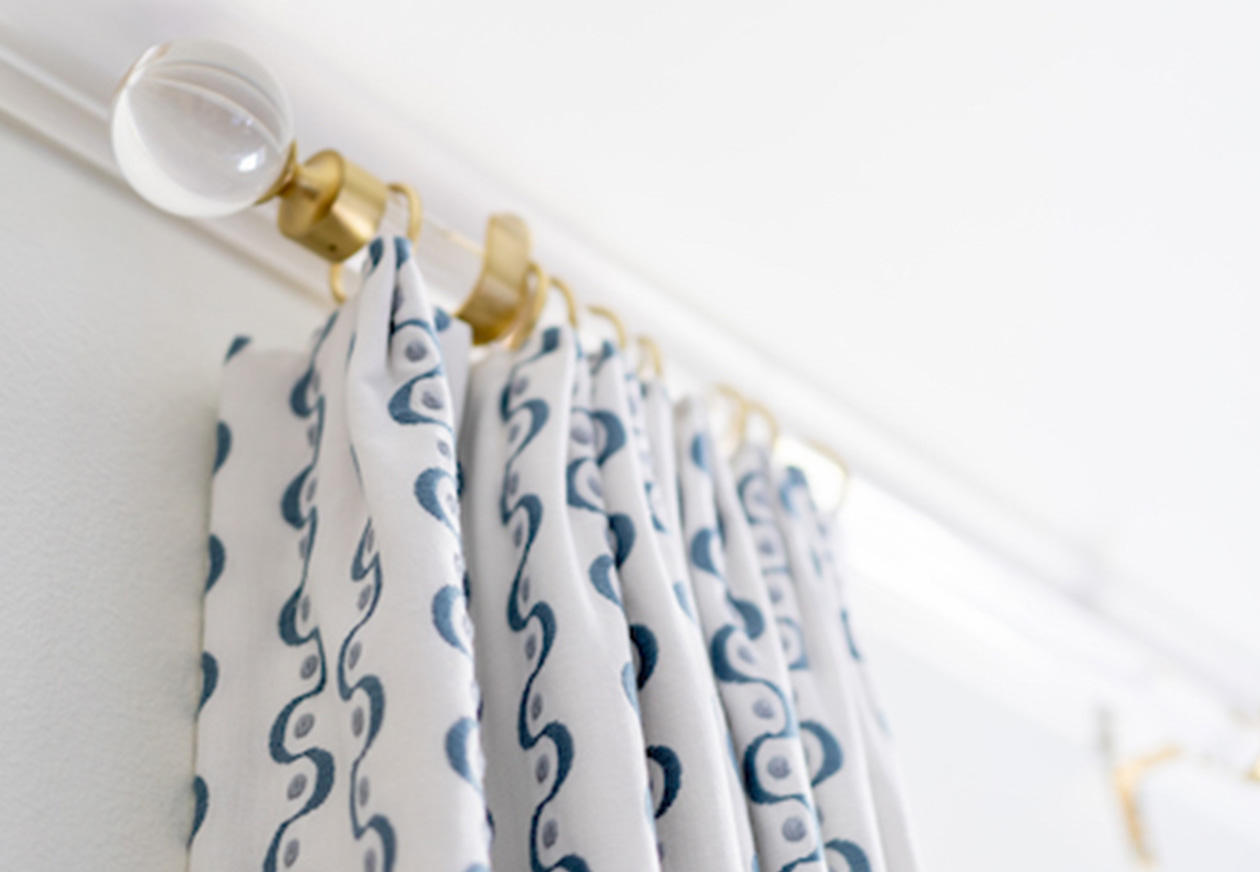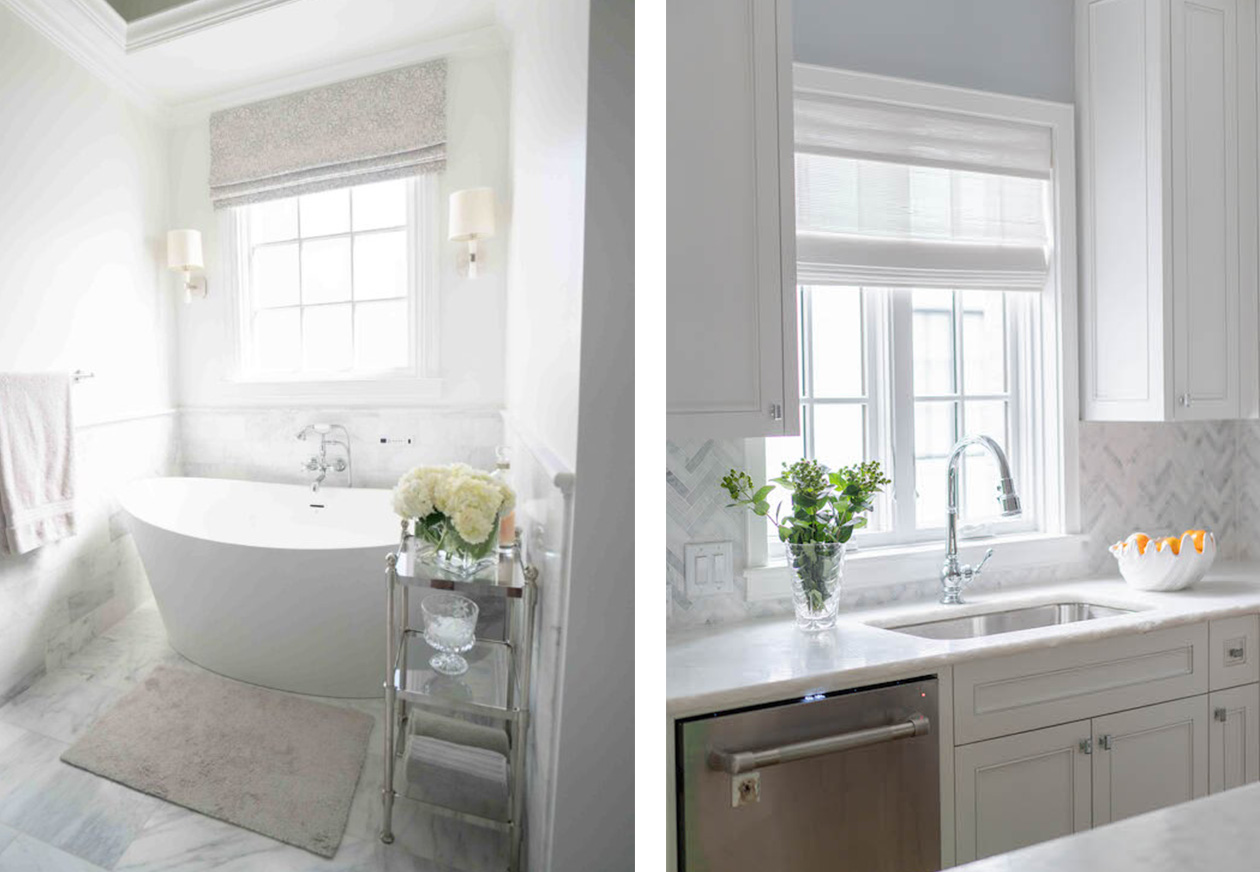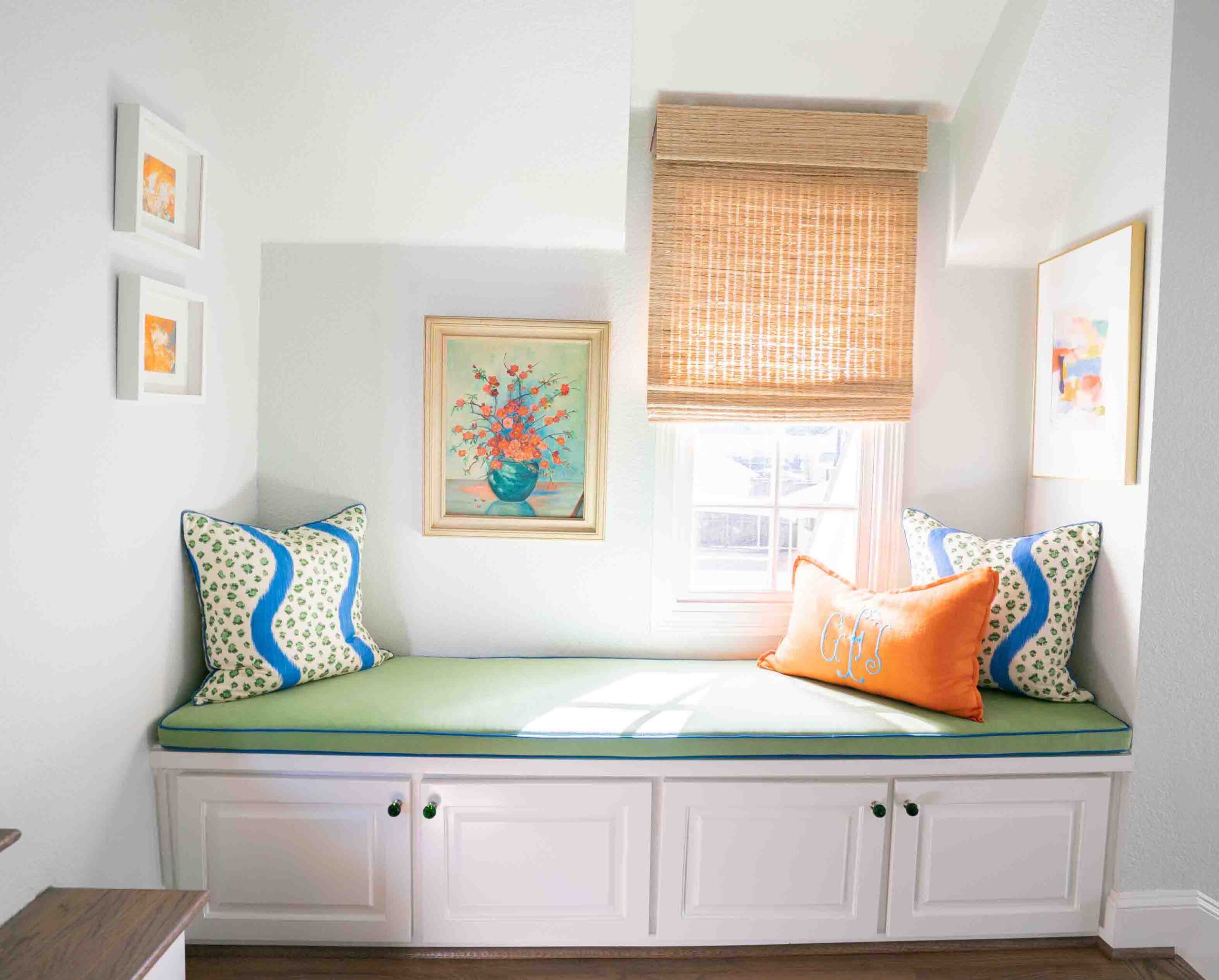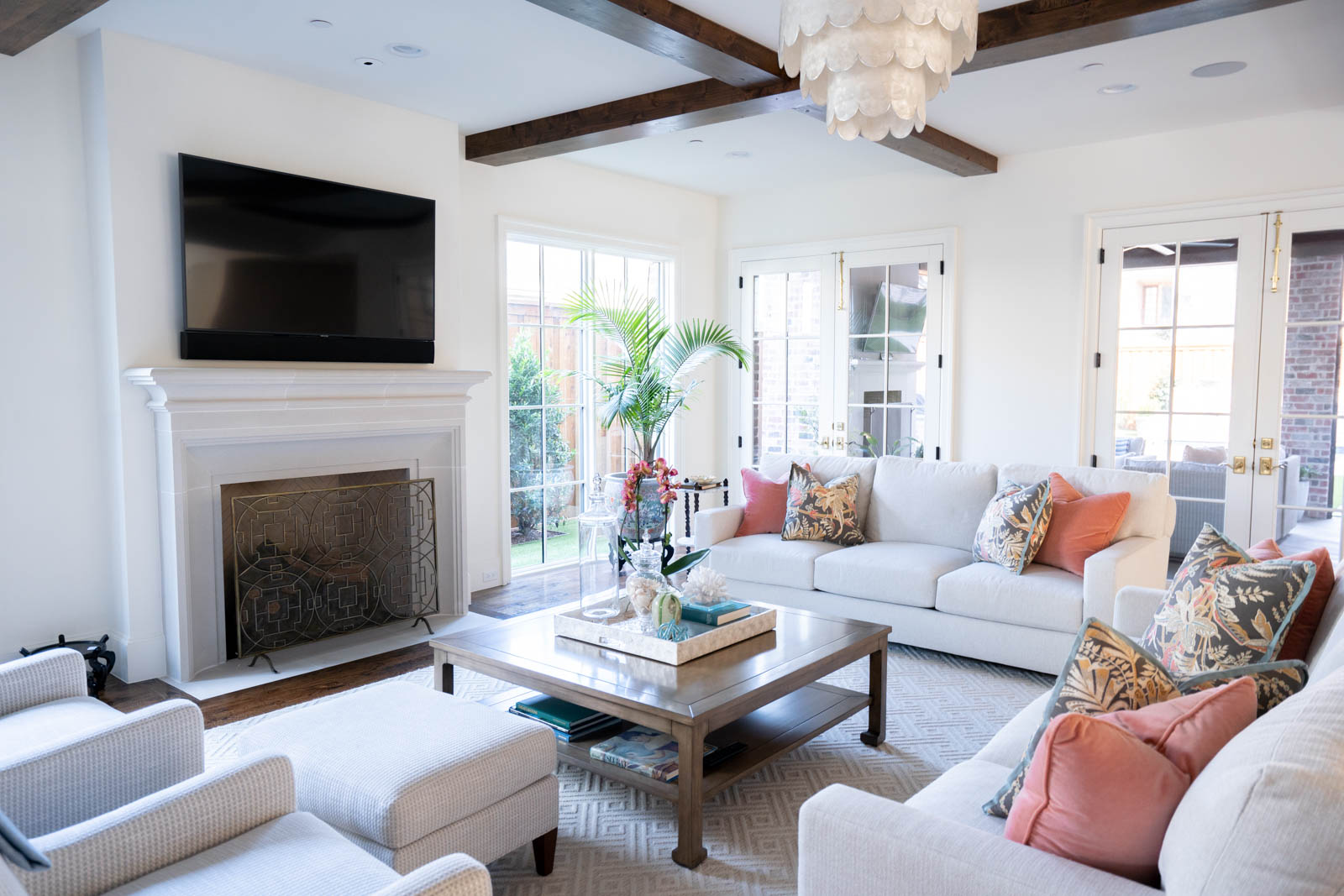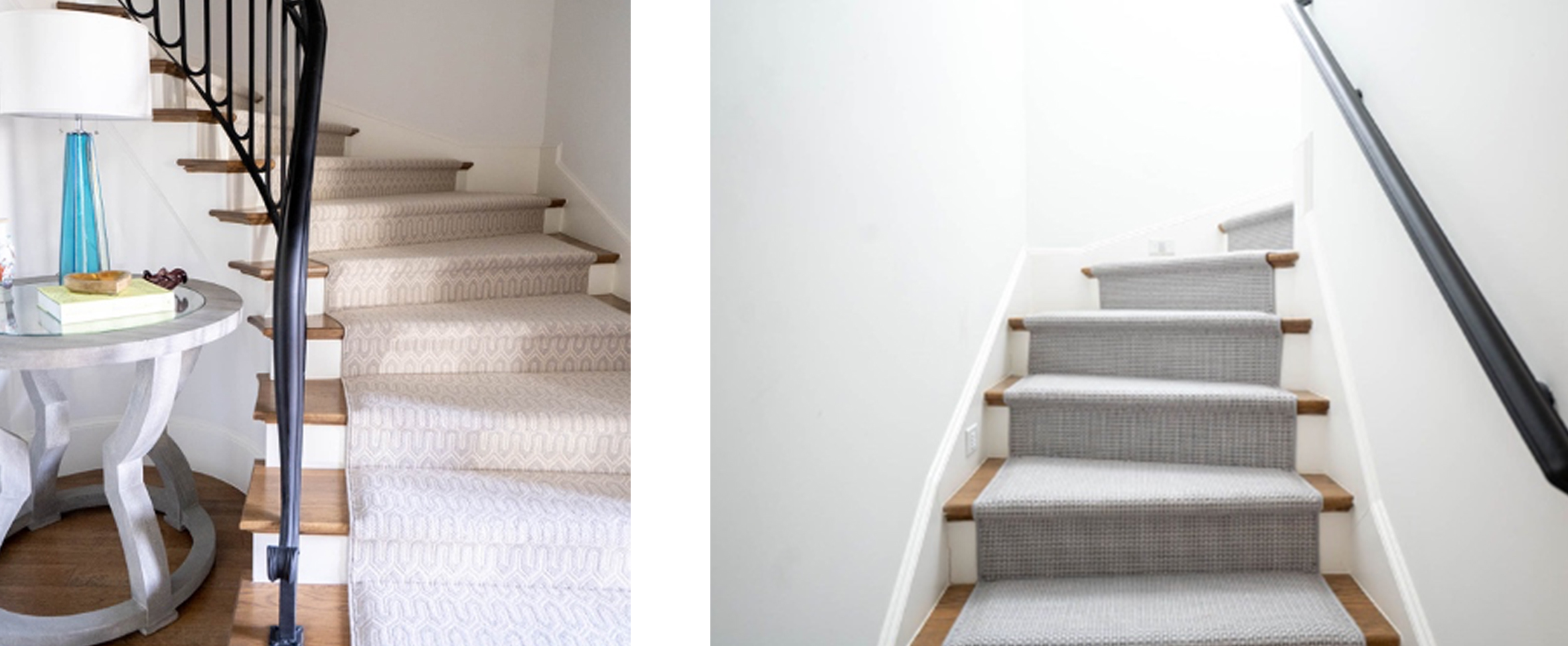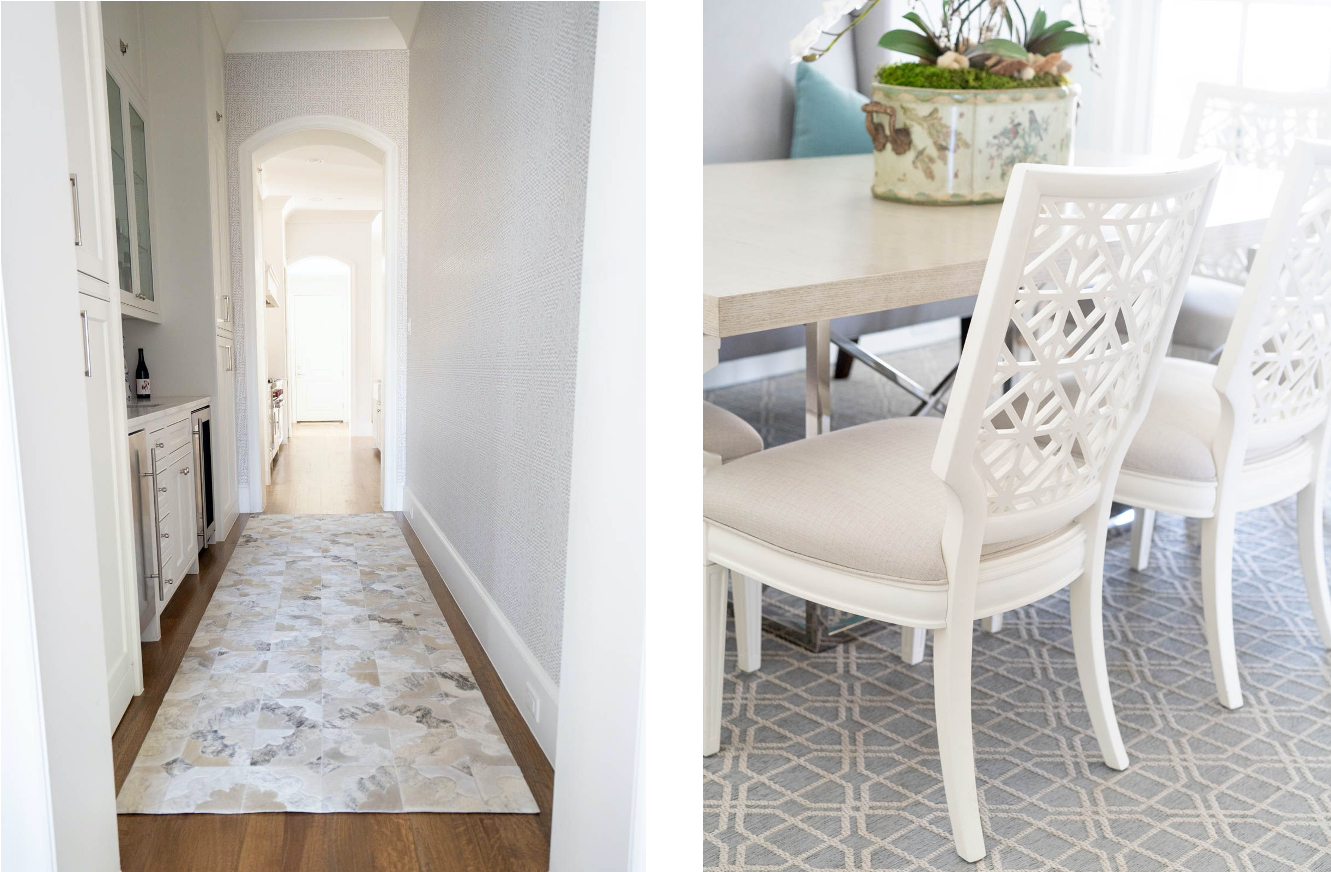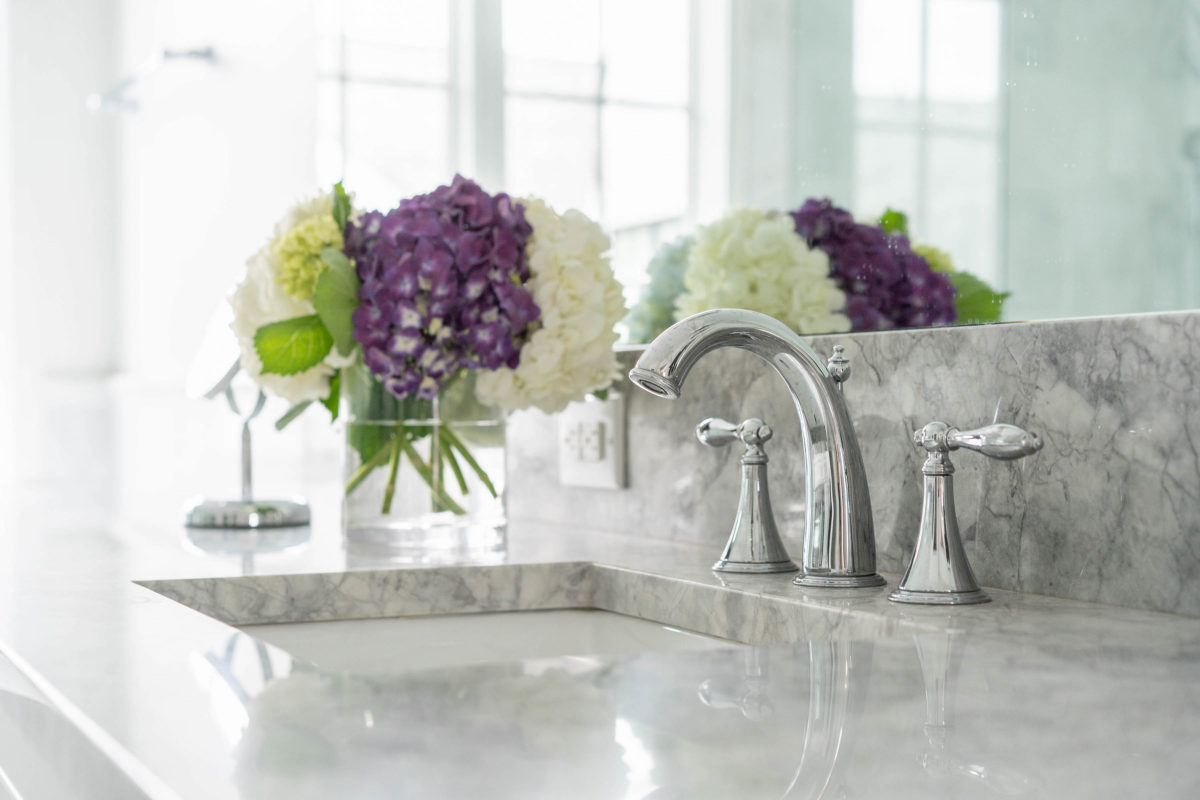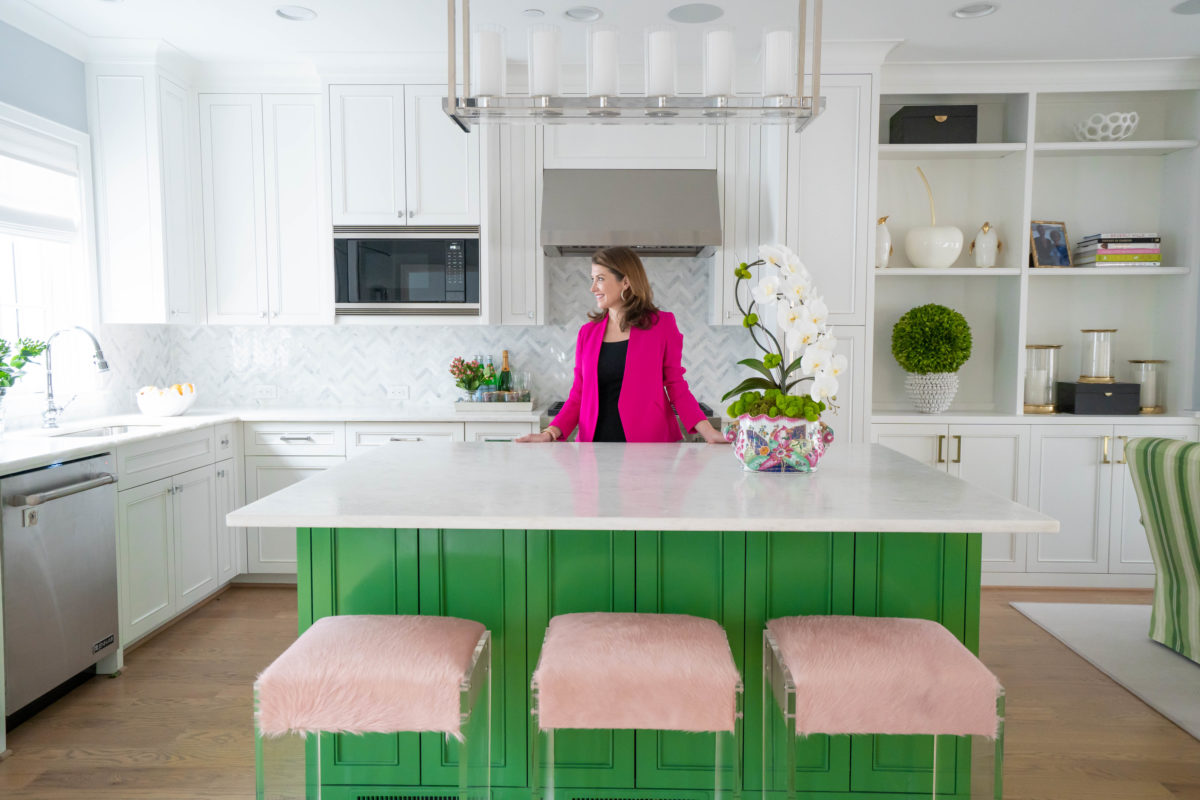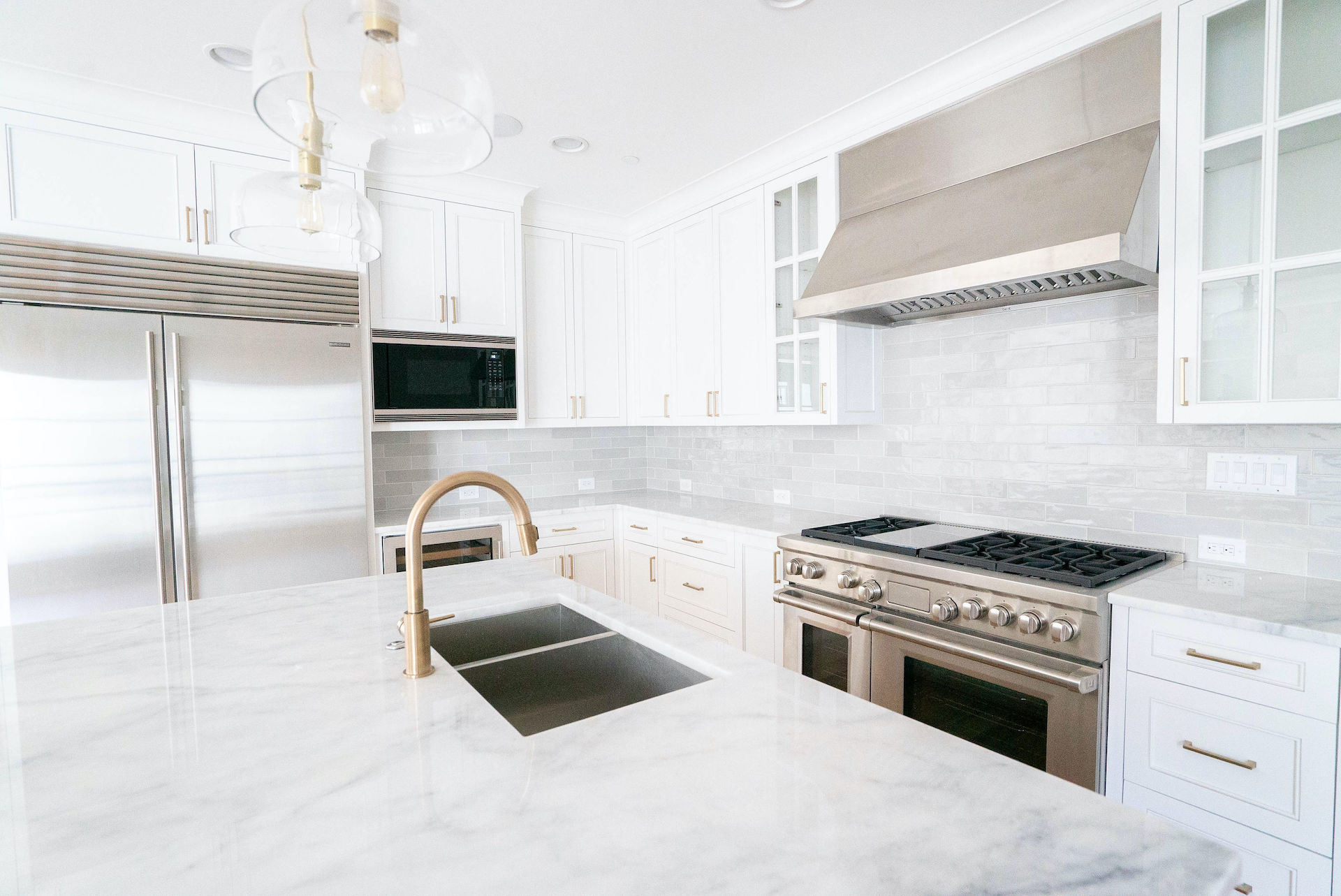When you think of your favorite room in your home, which room comes to mind? One of my favorite spaces to design is the powder room. It’s the perfect place to add unexpected design elements and create a truly unique aesthetic. If you’re not sure how you feel about your powder room, we have some helpful tips for you to pull off your ideal style for you and your guests to enjoy.
1. MAKE THE VANITY COUNT
The vanity is typically the focal point of your powder bath so it’s important to make a statement with this. Lacquered vanities can add a glamourous touch, and don’t be afraid to consider using saturated color. Your cabinet hardware should be substantial and make the vanity feel more like a piece of furniture. Gemstones, fretwork brass squares, and acrylic are some of my go-to styles.
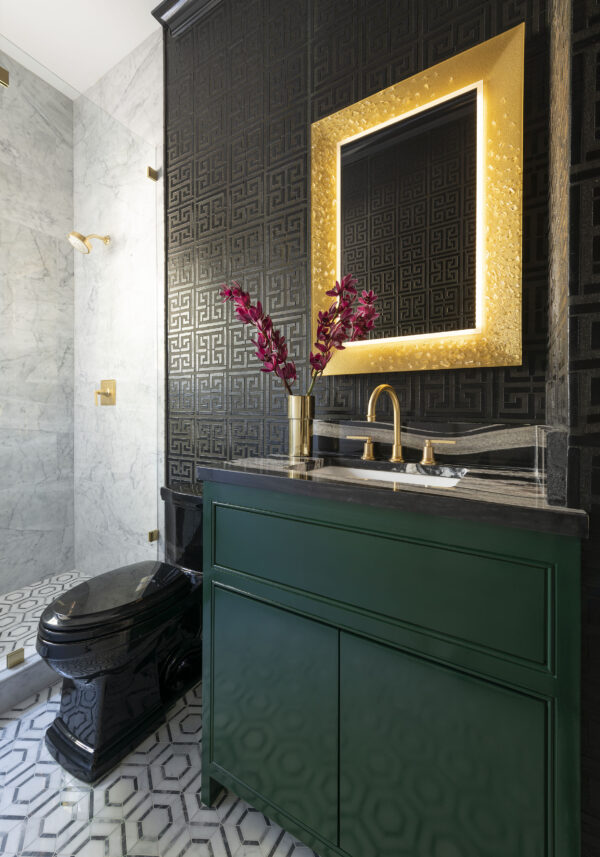
2. WALLPAPER WITH PERSONALITY
Wallpaper is the best way to add color and personality to the space. There are many great choices to choose from, like grasscloth, unique floral designs, and contemporary geometric styles. I also opt to paint the crown, trim, and vanity in a vibrant color that complements the paper. It can help tie the design together and make the space feel like a beautiful jewelry box.
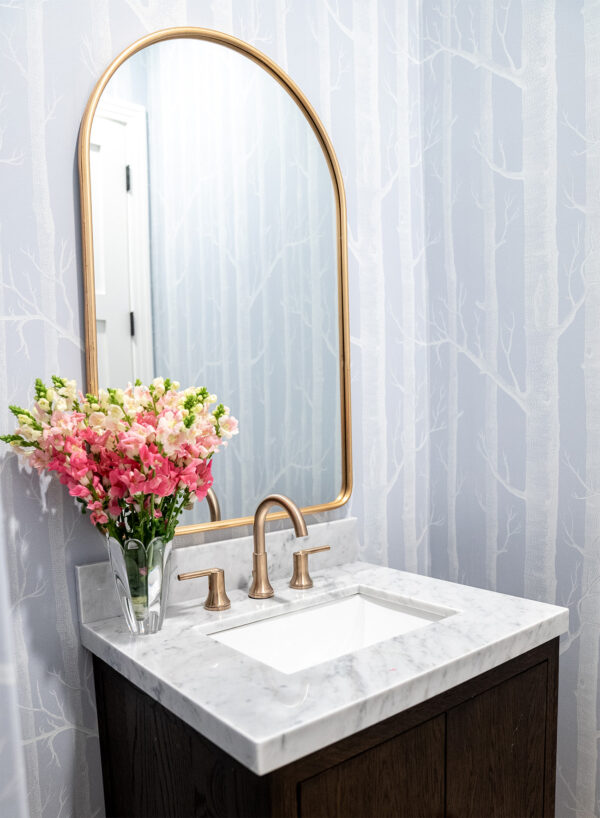 3. DRESS UP YOUR FAUCET
3. DRESS UP YOUR FAUCET
A unique faucet in a brass finish can dress up the space, while the knobs or levers can help support the overall look. The same goes for the hand towel ring. Phylrich, Waterworks, Sherle Wagner, and Newport Brass are brands I often include in my designs.
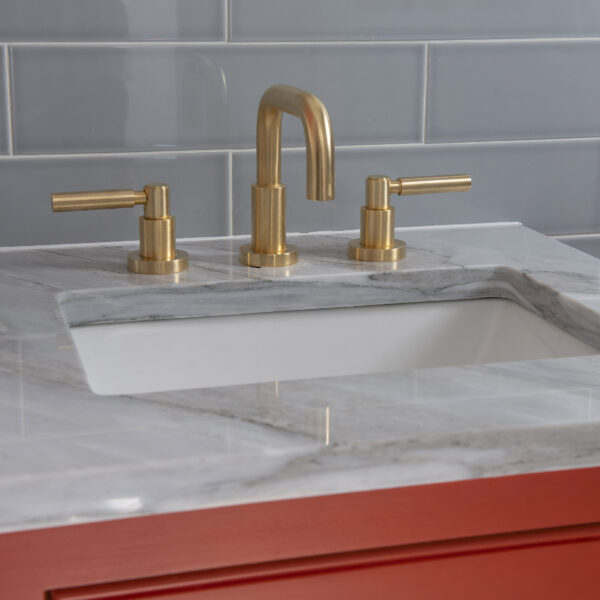
4. LIGHTEN THE MOOD
Lighting is also key, so be sure to select sconces or pendants that feel more bespoke and unique rather than harsh and utilitarian. Layering in the right kind of light will give your powder room that added touch of luxury.
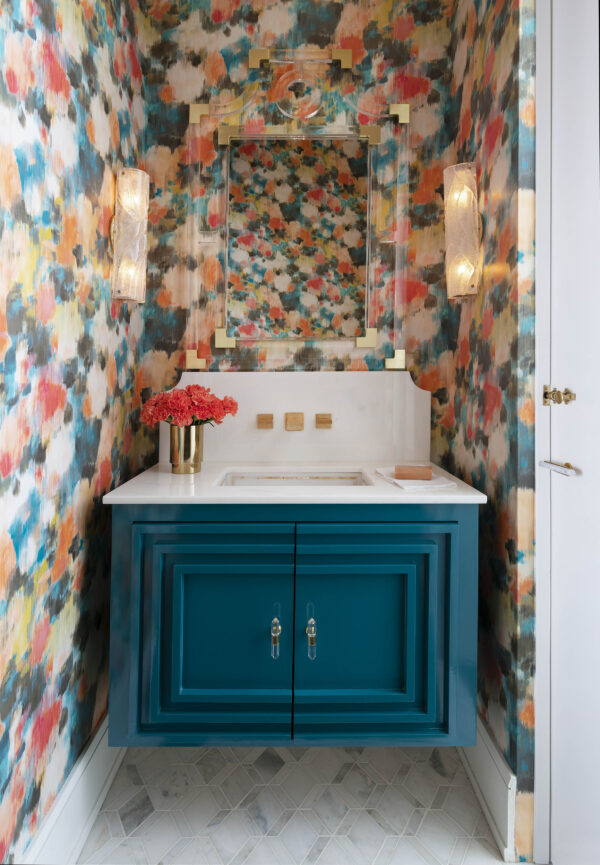
5. MIRROR, MIRROR ON THE WALL
Mirrors are another great way to add style and are a complementary element to your vanity. Feel free to mix and match metals or go for a vintage Venetian or bamboo frame to highlight your unique look.
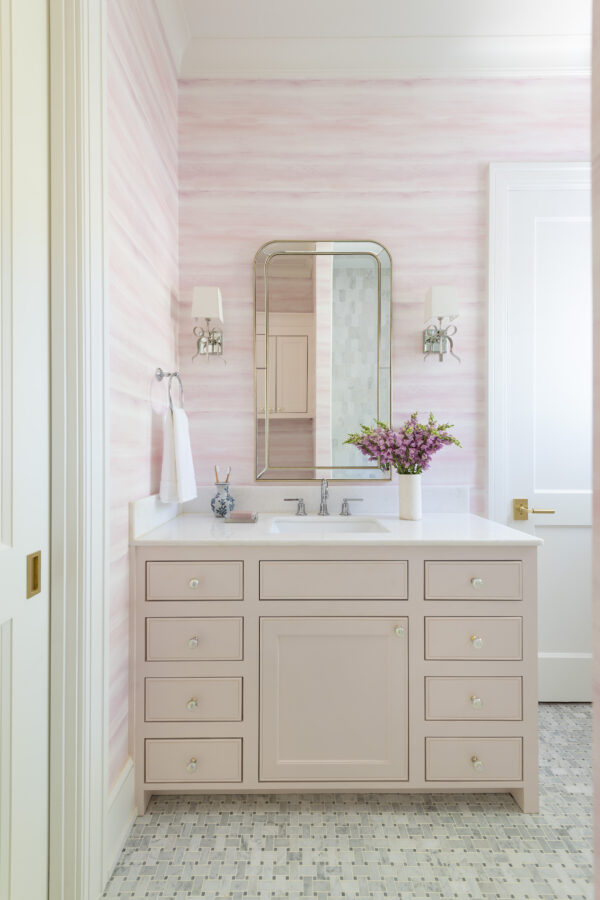
6. MAKE IT PERSONAL
Don’t forget the personal touches too. Leontine Linens, Aerin Lauder, and B’s Knees are some of our favorite places to find those personal touches. These items can include monogrammed or embroidered hand towels, luxury bars of soap, fragrance diffusers, and shagreen matchboxes. No matter how small, these thoughtful additions always go a long way.
If you or someone you know is planning on a powder room refresh, we hope these pointers serve as a guide to bring that extra dose of personality to your home. No matter your style, you can always make an impact with these elements to create your perfect powder room.

